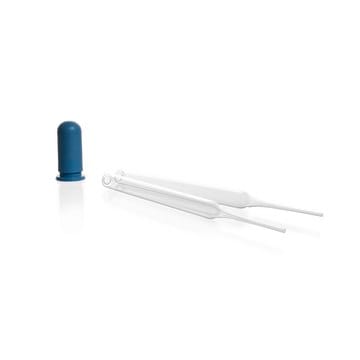The samples remain stable for up to one day at 4°C, but for longer-term storage, it is preferable to store them at -80°C. Additionally, the samples are stable for up to one freeze/thaw cycle. If more freeze/thaw cycles are required, it is best to aliquot the samples.
HKI2MAG-99K
MILLIPLEX® Human Kidney Injury Magnetic Bead Panel 2 - Toxicity Multiplex Assay
The analytes available for this multiplex kit are: α-1-Microglobulin, Albumin, Clusterin, Cystatin C, EGF, Lipocalin-2/NGAL, and Osteopontin (OPN).
Synonym(e):
Human Kidney Toxicity Multiplex Assay, Luminex® Human Kidney Toxicity Assay, Millipore Human Kidney Toxicity Panel
About This Item
Empfohlene Produkte
Qualitätsniveau
Speziesreaktivität
human
Hersteller/Markenname
Milliplex®
assay range
accuracy: 95-109%
sensitivity: 0.015-5.359 ng/mL
(MinDC = 2SD)
standard curve range: 0.01-10 ng/mL
(EGF)
standard curve range: 0.02-20 ng/mL
(Lipocalin-2/ NGAL)
standard curve range: 0.20-200 ng/mL
(Cystatin C)
standard curve range: 0.59-600 ng/mL
(Osteopontin (OPN))
standard curve range: 0.98-1,000 ng/mL
(α-1-Microglobulin)
standard curve range: 3.91-4,000 ng/mL
(Albumin)
standard curve range: 4.88-5,000 ng/mL
(Clusterin)
inter-assay cv: <20%
intra-assay cv: <10%
Methode(n)
multiplexing: suitable
Nachweisverfahren
fluorometric (Luminex xMAP)
Versandbedingung
wet ice
Allgemeine Beschreibung
The MILLIPLEX® portfolio provides valuable research assays to investigate multiple biomarkers of kidney injury in human urine samples using the Luminex® xMAP® instrument platform. The analytes available for this multiplex kit are: α-1-Microglobulin, Albumin, Clusterin, Cystatin C, EGF, Lipocalin-2/NGAL, and Osteopontin (OPN).
Panel Type: Toxicity
Spezifität
There was no or negligible cross-reactivity between the antibodies for an analyte and any of the other analytes within a panel.
Anwendung
- Analytes: α-1-Microglobulin, Albumin, Clusterin, Cystatin C, EGF, Lipocalin-2/NGAL, Osteopontin (OPN)
- Recommended Sample type: Urine
- Recommended Sample dilution: 1:100 in kit Assay Buffer. Customers need to determine the optimal dilution factor for their samples. Our recommendations are based on urine samples from normal subjects.
- Assay Run Time: Overnight
- Research Category: Toxicity
Leistungsmerkmale und Vorteile
Sonstige Hinweise
Rechtliche Hinweise
Haftungsausschluss
Signalwort
Danger
Gefahreneinstufungen
Acute Tox. 3 Dermal - Acute Tox. 4 Inhalation - Acute Tox. 4 Oral - Aquatic Chronic 2 - Eye Dam. 1 - Skin Sens. 1 - STOT RE 2
Zielorgane
Respiratory Tract
Lagerklassenschlüssel
6.1C - Combustible acute toxic Cat.3 / toxic compounds or compounds which causing chronic effects
Analysenzertifikate (COA)
Suchen Sie nach Analysenzertifikate (COA), indem Sie die Lot-/Chargennummer des Produkts eingeben. Lot- und Chargennummern sind auf dem Produktetikett hinter den Wörtern ‘Lot’ oder ‘Batch’ (Lot oder Charge) zu finden.
Besitzen Sie dieses Produkt bereits?
In der Dokumentenbibliothek finden Sie die Dokumentation zu den Produkten, die Sie kürzlich erworben haben.
Verwandter Inhalt
Novel kidney toxicity biomarkers expand options for acute nephrotoxicity detection. Multiplex assays measure multiple renal damage biomarkers in small sample volumes, minimizing time and costs. See how MILLIPLEX® multiplex kidney toxicity assays detected vancomycin-induced subacute nephrotoxicity in rat models.
Multiplex toxicity assays enable researchers to simultaneously measure multiple toxicity biomarkers of various organs to gain a better understanding of toxicity. Explore how MILLIPLEX® multiplex toxicity assays are advancing research on liver injury, kidney toxicity, genotoxicity, and more.
Discover the benefits of MILLIPLEX® multiplex assays, based on Luminex® xMAP® multiplex assay technology, that provide consistent, high-quality results and see how these multiplex biomarker Luminex® assays are being used to advance research.
-
How should urine samples for use in the Milliplex Kidney Injury Panels be stored? Is it better to store them at 4°C if they will be used in a few days or go through a freeze/thaw cycle?
1 answer-
Helpful?
-
-
Do any of the analytes available in the Milliplex Human Kidney Injury Panel 2 exhibit cross-reactivity with NHP samples?
1 answer-
We conducted tests on 4 NHP samples and were able to detect EGF, Albumin, A1M, Clusterin, and Cystatin C in the samples. However, we were not able to detect OPN or NGAL, although the absence of signal could be attributed to low levels in the few samples tested. It's important to note that the kit has not been tested with NHP standards to determine the extent of reactivity.
Helpful?
-
Active Filters
Unser Team von Wissenschaftlern verfügt über Erfahrung in allen Forschungsbereichen einschließlich Life Science, Materialwissenschaften, chemischer Synthese, Chromatographie, Analytik und vielen mehr..
Setzen Sie sich mit dem technischen Dienst in Verbindung.








